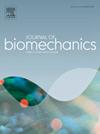Simulating vortex generation to investigate the propulsive and braking mechanisms of breaststroke kick using computational fluid dynamics on a breaststroke swimmer
Abstract
Swimmers primarily increase their forward velocity through lower limb motion in breaststroke, making the breaststroke kick crucial for optimizing race times. Recent studies have highlighted the generation of vortices around the swimmer’s entire body to propel forward during swimming. However, the investigation of vortex generation during breaststroke kicks remains unexplored. This study aimed to reveal the propulsive and braking mechanisms of breaststroke kicks by simulating vortex generation using computational fluid dynamics (CFD). Kinematic data during the breaststroke kick and a three-dimensional digital model were collected to conduct CFD for a male breaststroke swimmer. Vortex generation was determined during one breaststroke kick from the CFD results. Vortices, which potentially induce a decrease in forward velocity, were generated by the swimmer’s lower legs and feet during the recovery phase. The swimmer generated vortices on the dorsal side of the feet and the posterior and lateral sides of the lower legs to increase the forward velocity during the out-sweep phase. The swimmer generated vortices on the lateral sides of the thighs and lower legs and the dorsal and lateral sides of the feet during the in-sweep phase to maintain forward velocity. Moreover, vortices generated from the out-sweep to the in-sweep merged and were shed backward relative to the swimming direction after the in-sweep phase. This study is the first to reveal the propulsive and braking mechanisms of breaststroke kicks by analyzing the vortex generation.

 求助内容:
求助内容: 应助结果提醒方式:
应助结果提醒方式:


